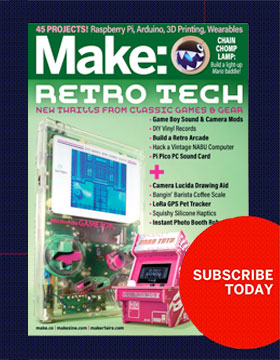Artists’ studios have traditionally been full of reference materials like botanical drawings, medical texts, photographs, catalogs, and images clipped from magazines. Artists use these images as direct models for realistic renderings, but they often provide indirect inspiration as well; patterns in a botanical drawing might end up as abstract gestures in a painting, or shapes from a tool catalog might inspire sculptural forms.
Just as often, reference materials simply set the mood or tone in the studio; being surrounded by meaningful materials is an inspiration in itself. I recently visited the reconstruction of Francis Bacon’s home studio at the Hugh Lane Gallery in Dublin, and was overwhelmed by the density and intensity of the materials (books, magazines, clothing, painting supplies, canvases) jumbled across every surface in the room. Although Bacon didn’t often use images from these sources directly in his paintings, he was certainly inspired by having them around. He said: “I feel at home here in this chaos because chaos suggests images to me.” Interestingly, the rest of his small home was rather tidy and uncluttered; the chaos of his studio seemed a conscious technique, a key part of his process as a painter.
In addition to a studio littered with reference debris, many artists now also look to the seemingly unlimited resources of the internet: image searches, video sharing sites, scientific and historical databases, and so on. Their studios might still be chaotic, but now their computer desktops are as well.
Ceramics artist Christopher Russell has been working on a series of hyperdetailed, incredibly lifelike (especially given the fact that they’re monochromatic!) bee sculptures, including intricate sections of beehives, bees on flowers, their little legs laden with pollen, and large blowups of grains of pollen. He mostly uses traditional, labor-intensive manual techniques to sculpt the pieces, often working from photographs or illustrations in books.
But recently he’s also been using images from online science resources, like the PalDat palynological (the study of pollen and spores) database, which is where he found high-resolution electron microscope images that he used to create the giant pollen grains. The site has a graphical search feature that made it easy for a nonexpert to navigate the huge variety of images by searching for the sorts of shapes and textures he was interested in.
Russell told me, “One of the reasons I enjoy working from life is that nature comes up with textures and forms that I just wouldn’t ever imagine myself, or think I could produce myself. When I saw the pollen images, my first reaction was that they would be impossible to reproduce in clay. Then my mind began to figure out production techniques, over time, while I was in the shower or walking, or driving. At some point I thought, ‘I should give it a try,’ and ten days later I had a ball covered in spines.”
Russell is using traditional techniques to create objects based on very contemporary sources — electron microscopes have only been around for 70 years or so, and the PalDat website went live in 2005. Before electron microscopes, we didn’t really know in detail what pollen grains looked like, and before the internet, getting access to scientific images was often an arduous and expensive proposition. PalDat is free for noncommercial use (although many scientific resources, particularly peer-reviewed journals, are still notoriously expensive).
Caitlin Berrigan’s recent Viral Confections project takes a similar approach to gathering source data, but her method of translating 3D data to a physical object uses more contemporary techniques. While reading about similarities between the structure of some viruses and Buckminster Fuller’s geodesic domes, she started imagining viruses as structures or shelters at a human scale, turning the relationship between virus and human inside out. Diagnosed with hepatitis C herself, she decided to make an artwork that addresses both the formal aspects of the virus and its often devastating consequences in people. She looked online for information about the structure of the virus, but found little about it.
After consulting with a biologist, Berrigan decided to use the dengue virus, a close cousin of hepatitis C, instead. She was able to get structural information about dengue from the online RSBC Protein Data Bank, but it was in a format that wasn’t easily imported into the commercial 3D applications she used. Finally, after a convoluted series of translations and interpretations, she ended up with a 3D model of the virus that she could send to a rapid prototyping machine.
She printed out a large-scale replica, and then used traditional mold-making techniques to create food-grade silicone molds, which she used to cast edible chocolate copies of the virus. She now hosts tea parties where guests are invited to “befriend the virus” by consuming the chocolate truffles and talking with the artist about the issues surrounding hepatitis C.
The nature of studio hoarding changes when all the information you need is “out there” for the taking, 24/7. That one iconic image on your wall takes on a different meaning when it’s surrounded by thumbnails of other images that a search engine has decided are similar.
It’s a bit startling to realize that the first glimpse of the New World that most Europeans got was via landscapes painted in the Americas and shipped back to Europe with round trip times of months or even years. Now, images from Mars arrive daily, and an artist who wants a better look at the rings of Saturn need only point her browser at the NASA website. What does access to all that data, all those images and sounds and 3D models, not to mention live webcams, tactile feedback devices, and perhaps soon, online smell-o-vision, mean for artists? There’s only one way to find out.
RESOURCES:
Christopher Russell: russellproject.com
PalDat palynological database: www.paldat.org
Caitlin Berrigan: membrana.us
Research Collaboratory for Structural Bioinformatics (RCSB) Protein Databank: pdb.org
ADVERTISEMENT
Join Make: Community Today










